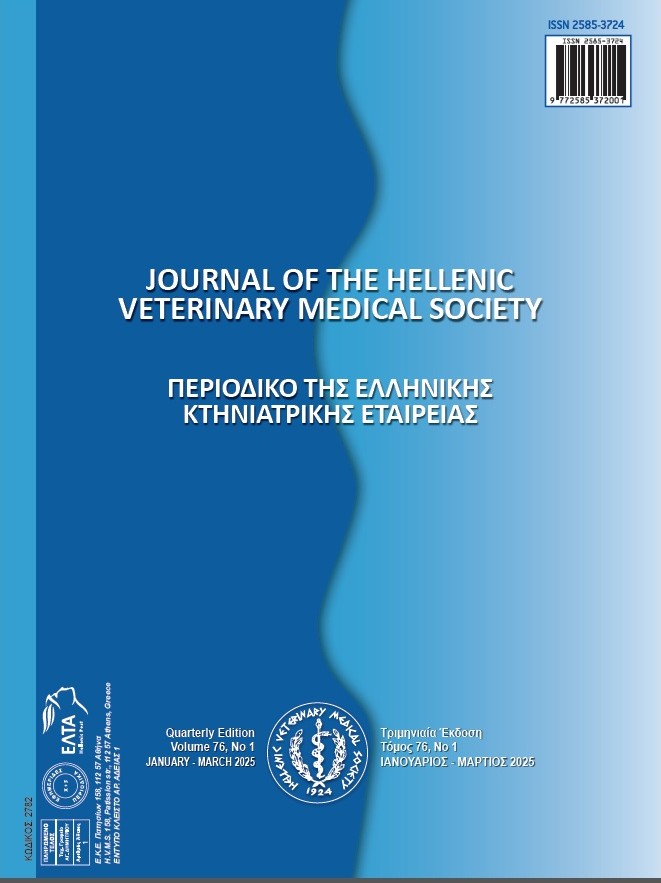Eosinophilic Granulomatous Dermatitis Due to Hairy vetch (Vicia villosa Roth) Poisoning in a Holstein Cow

Abstract
Eosinophilic granulomatous dermatitis is reported due to Hairy vetch (Vicia villosa Roth) consumption in a 3-year-old Holstein cow. Cow showed dermatitis over the face, neck and perineum in last 2-month of period. Biopsy samples were taken surgically by local anestesia. The lesions were characterized by multifocal eosinophilic granulomatous dermatitis. Immunohistochemistry demonstrated a marked and diffuse and immunostaining CD3, whereas CD20 and CD68 staining were not so prominent. The plant-lesion relationship was well-established. After the owner stopped feeding the vetch, skin lesions were regressed 6 months later and completely resolved 12 months.
Article Details
- Zitationsvorschlag
-
Eroksuz, Y., Polat, E., Akdeniz Incili, C., Karabulut, B., Sagliyan, A., & Eroksuz, H. (2023). Eosinophilic Granulomatous Dermatitis Due to Hairy vetch (Vicia villosa Roth) Poisoning in a Holstein Cow . Journal of the Hellenic Veterinary Medical Society, 74(2), 5517–5520. https://doi.org/10.12681/jhvms.26841
- Ausgabe
- Bd. 74 Nr. 2 (2023)
- Rubrik
- Case Report

Dieses Werk steht unter der Lizenz Creative Commons Namensnennung - Nicht-kommerziell 4.0 International.
Authors who publish with this journal agree to the following terms:
· Authors retain copyright and grant the journal right of first publication with the work simultaneously licensed under a Creative Commons Attribution Non-Commercial License that allows others to share the work with an acknowledgement of the work's authorship and initial publication in this journal.
· Authors are able to enter into separate, additional contractual arrangements for the non-exclusive distribution of the journal's published version of the work (e.g. post it to an institutional repository or publish it in a book), with an acknowledgement of its initial publication in this journal.
· Authors are permitted and encouraged to post their work online (preferably in institutional repositories or on their website) prior to and during the submission process, as it can lead to productive exchanges, as well as earlier and greater citation of published work.






